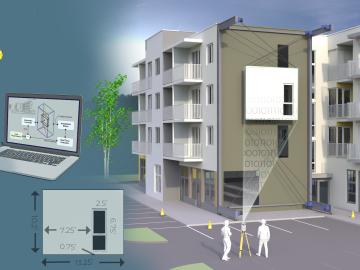
Filter News
Area of Research
- Advanced Manufacturing (19)
- Biology and Environment (19)
- Building Technologies (1)
- Computational Engineering (1)
- Computer Science (9)
- Electricity and Smart Grid (1)
- Energy Science (94)
- Fusion and Fission (14)
- Fusion Energy (9)
- Materials (40)
- Materials for Computing (6)
- National Security (15)
- Neutron Science (9)
- Nuclear Science and Technology (8)
- Quantum information Science (4)
- Sensors and Controls (1)
- Supercomputing (29)
News Type
News Topics
- (-) 3-D Printing/Advanced Manufacturing (95)
- (-) Big Data (37)
- (-) Fusion (35)
- (-) Grid (45)
- (-) Machine Learning (37)
- (-) Molten Salt (8)
- (-) Quantum Science (48)
- Advanced Reactors (27)
- Artificial Intelligence (60)
- Bioenergy (65)
- Biology (74)
- Biomedical (41)
- Biotechnology (21)
- Buildings (46)
- Chemical Sciences (57)
- Clean Water (23)
- Composites (26)
- Computer Science (119)
- Coronavirus (34)
- Critical Materials (25)
- Cybersecurity (26)
- Education (3)
- Element Discovery (1)
- Emergency (1)
- Energy Storage (88)
- Environment (126)
- Exascale Computing (17)
- Fossil Energy (2)
- Frontier (20)
- High-Performance Computing (55)
- Hydropower (8)
- Irradiation (2)
- Isotopes (38)
- ITER (6)
- Materials (105)
- Materials Science (105)
- Mathematics (8)
- Mercury (9)
- Microelectronics (1)
- Microscopy (39)
- Nanotechnology (47)
- National Security (38)
- Neutron Science (91)
- Nuclear Energy (63)
- Partnerships (35)
- Physics (46)
- Polymers (28)
- Quantum Computing (19)
- Security (20)
- Simulation (27)
- Space Exploration (13)
- Statistics (2)
- Summit (32)
- Transportation (74)
Media Contacts

As a mechanical engineer in building envelope materials research at ORNL, Bryan Maldonado sees opportunities to apply his scientific expertise virtually everywhere he goes, from coast to coast. As an expert in understanding how complex systems operate, he’s using machine learning methods to control the process and ultimately optimize performance.

ORNL is the lead partner on five research collaborations with private fusion companies in the 2024 cohort of the Innovation Network for FUSion Energy, or INFUSE, program. These collaborative projects are intended to resolve technical hurdles and develop enabling technologies to accelerate fusion energy research in the private sector.

Researchers for the first time documented the specific chemistry dynamics and structure of high-temperature liquid uranium trichloride salt, a potential nuclear fuel source for next-generation reactors.

A digital construction platform in development at Oak Ridge National Laboratory is boosting the retrofitting of building envelopes and giving builders the tools to automate the process from design to installation with the assistance of a cable-driven robotic crane.

A study by more than a dozen scientists at the Department of Energy’s Oak Ridge National Laboratory examines potential strategies to integrate quantum computing with the world’s most powerful supercomputing systems in the pursuit of science.

Debjani Singh, a senior scientist at ORNL, leads the HydroSource project, which enhances hydropower research by making water data more accessible and useful. With a background in water resources, data science, and earth science, Singh applies innovative tools like AI to advance research. Her career, shaped by her early exposure to science in India, focuses on bridging research with practical applications.

John joined the MPEX project in 2019 and has served as project manager for several organizations within ORNL.

Brittany Rodriguez never imagined she would pursue a science career at a Department of Energy national laboratory. However, after some encouraging words from her mother, input from key mentors at the University of Texas Rio Grande Valley, or UTRGV, and a lot of hard work, Rodriguez landed at DOE’s Manufacturing Demonstration Facility, or MDF, at Oak Ridge National Laboratory.

Researchers at Oak Ridge National Laboratory have opened a new virtual library where visitors can check out waveforms instead of books. So far, more than 350 users worldwide have utilized the library, which provides vital understanding of an increasingly complex grid.

Oak Ridge National Laboratory scientists have developed a method leveraging artificial intelligence to accelerate the identification of environmentally friendly solvents for industrial carbon capture, biomass processing, rechargeable batteries and other applications.


